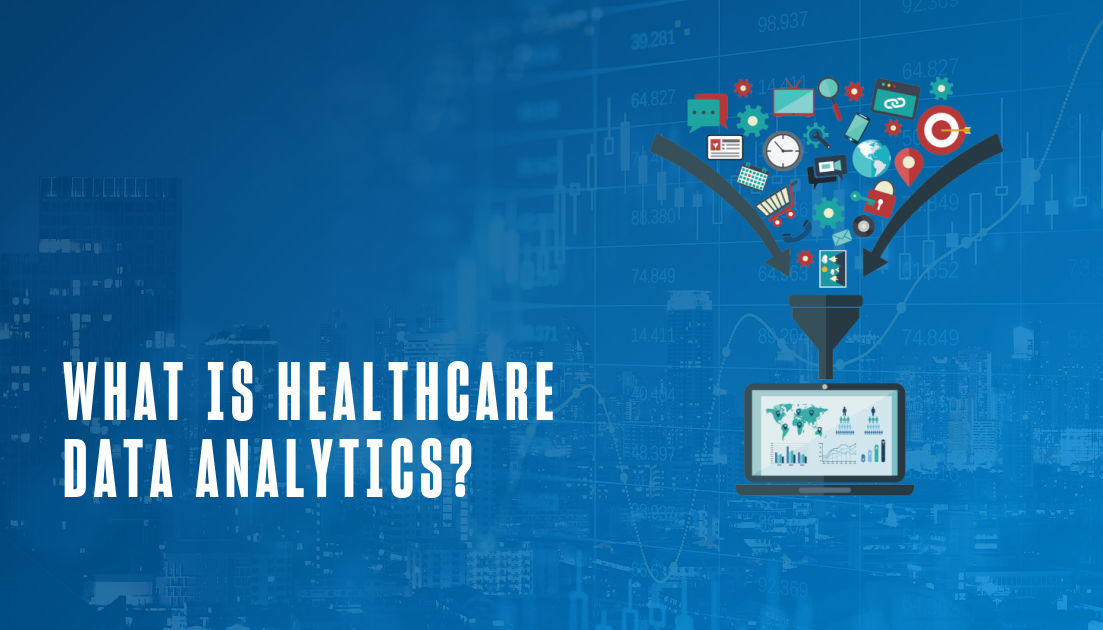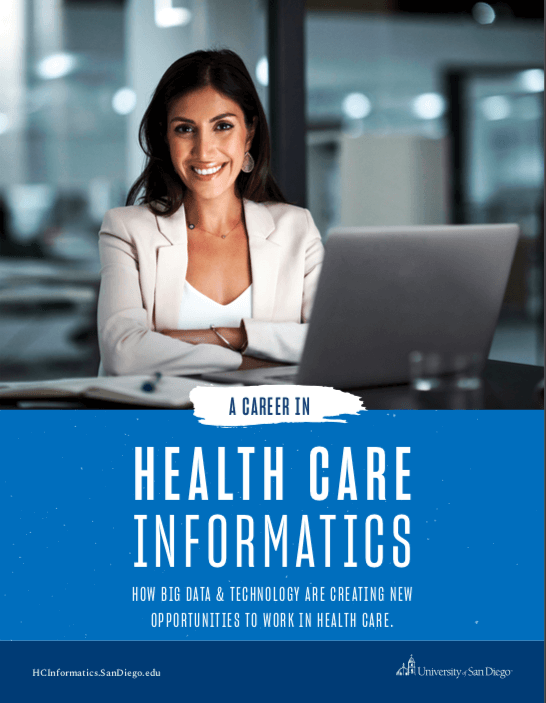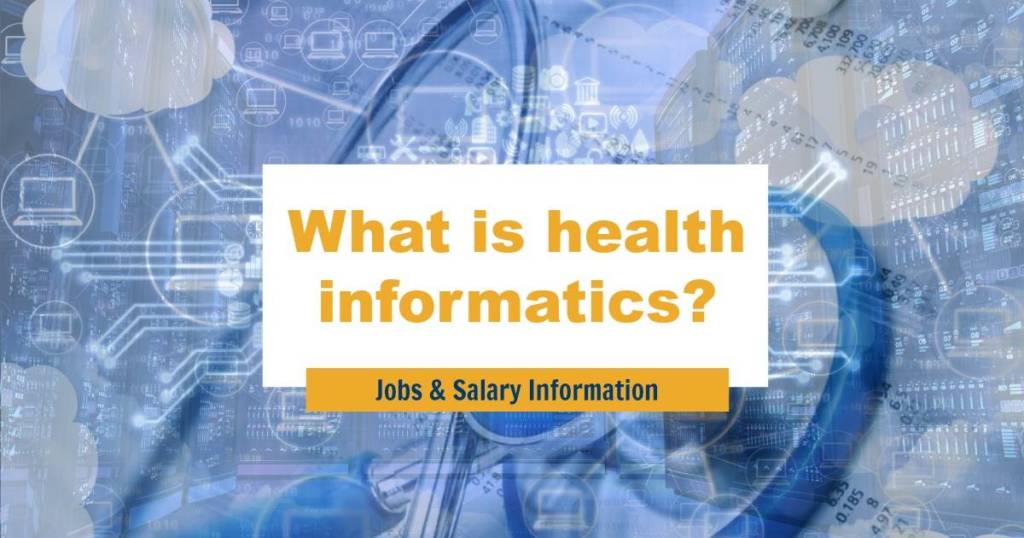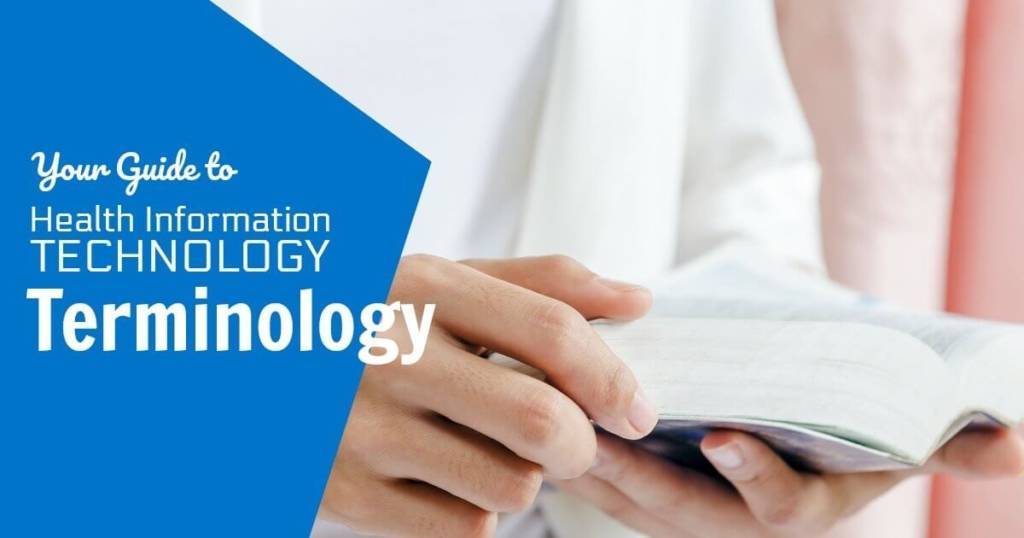Can big data save lives? Advocates of the emerging field of health care analytics certainly believe it can.
Big data analytics is transforming the way organizations do business in dozens of industries. But the impact may ultimately be most profound in the field of medicine, where advanced health care analytics holds the potential to revolutionize patient care.
Big data is already having positive effects on many areas of health care, including:
- Advancements in telemedicine
- Enhanced patient engagement
- Wearables that provide real-time alerts
- Disease prevention/population health
- Improving/refining treatment standards
- Potential to help cure diseases
- Improved staffing efficiency
- Prevention of opioid abuse
As the nation’s top technology innovators partner with health care organizations to leverage valuable insights from the immense amount of health care data being generated and collected each day, the search is on for new ways to transform rapidly expanding databases into improved outcomes for patients and entire populations.
How the Data Revolution is Transforming Health Care
The transition from old-fashioned paper records to electronic health records (EHRs) for patients is one of the most significant factors contributing to today’s avalanche of health care data. However, there are many additional sources as well. These include:
- Clinical data from Computerized Physician Order Entry (CPOE)
- Real-time data from the new generation of wearable medical devices
- Machine-generated/sensor data, such as from monitoring vital signs
- Insurance claims, billing and cost data
- Patient/disease registries
- Research and development data
- Clinical trials data
- Health surveys
- Prescription data
In addition to leveraging health care analytics to improve clinical care, researchers are also focused on finding ways to deliver care more cost-effectively through data-driven analysis of financial systems, supply chains, fraud and human resources staffing.
One example of utilizing health care analytics to improve care while saving money comes from Minnesota, where Allina Health System realized more than $45 million in performance improvement savings over five years by using data to adjust its approach to cardiovascular care across its 13 hospitals and 82 clinics.
Going forward, it is projected that health care analytics will have a significant impact in many other important areas, including:
- Epidemiology: Health care analytics professionals are experimenting with data visualization to identify and more quickly control disease outbreaks.
- Clinical trials: Health data analytics is expected to help researchers go to market faster with important new drugs.
- Genomics: Advanced understanding of how diseases affect different people will enable medical researchers to develop personalized medicine based on individual DNA makeups.
- Social factors: Heightened ability to analyze data about the social determinants of health (such as where patients live, work and shop, what they eat, conditions related to their environment, etc.) opens new possibilities to better predict disease trends and to develop health and disease prevention programs.
The ongoing challenge for those working in health care analytics is to drill down to derive actionable insights from the ever-deepening sea of health care data.
Health Data Analytics and Health Informatics
So how does the vitally important field of health care analytics connect to the broader discipline of health informatics?
Noting that “often the two disciplines are erroneously seen as one and the same,” the American Health Information Management Association (AHIMA) asserts that “data analytics and informatics are both essential for the success of health care organizations,” and explains the differences between them as follows:
Health data analytics refers to analysis of the data using quantitative and qualitative techniques to be able to explore for trends and patterns in the data — to “acquire, manage, analyze, interpret and transform data into accurate, consistent and timely information.”
Health informatics refers to “a collaborative activity that involves people, processes and technologies” to use the information derived from data analytics to “improve the delivery of health care services and improve patient outcomes.”
In practice, health care analytics is being used to improve many areas of clinical care, including patient management, disease prevention and adherence to clinical protocols, to name a few. And while this might sound nearly identical to health informatics, an AHIMA article titled “Data Analytics and Informatics are Two Separate Disciplines,” explains that data analytics involves the actual analysis of the data, while informatics is the application of that information. In terms of what this means for the professionals who work in these two closely related disciplines, the AHIMA article further explains that:
Health informatics professionals apply their knowledge of information systems, databases and information technology to help design effective technology systems that gather, store, interpret and manage the data that is generated in the process of providing health care to patients.
Health data analysts find ways to capture and use the data that is acquired by health information technology systems, within the health system or from external sources, and then display it in meaningful ways through graphs, charts, etc. to help demonstrate how an organization can improve clinical care and decision-making.
AHIMA depicts the “Informatics vs. Analytics” relationship in this infographic.
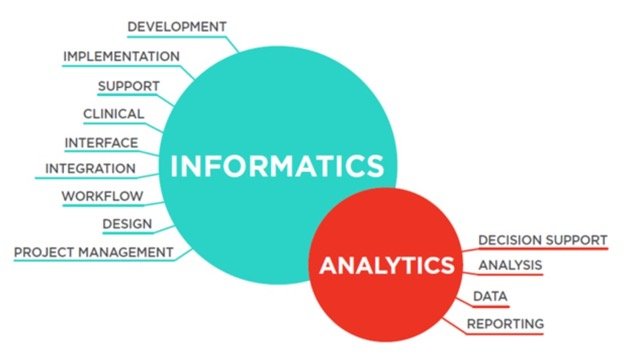
How Health Care Analytics Improves Patient Care
The power of health care analytics is exemplified in real patient scenarios every day. Here are just some of the many ways it has recently been used in health care practices.
Streamlining PTSD diagnosis
Post-traumatic stress disorder (PTSD) impacts nearly 8 million Americans, but reaching that diagnosis and beginning life-changing treatment can be a time-consuming process; and time, unfortunately, is not something many PTSD sufferers have to waste. Using machine learning, some physicians have been able to streamline the diagnosis process by eliminating some of the screening questions.
A team from the VA Boston Healthcare System and the Boston University School of Public Health built a machine learning model that learned how effectively different terms and questions in the diagnostic process accurately predicted PTSD diagnosis. This enabled the team to identify which items had weak associations and could be cut, while maintaining at least 90% accuracy.
Assisting with the COVID-19 pandemic fight
Tufts Medical Center in Boston, Massachusetts, used artificial intelligence (AI) to streamline their COVID-19 testing program to speed up the results process and deliver better treatment and optimal patient outcomes. This leading hospital group used an AI platform to automate high-volume, labor-intensive data entry and patient screening tasks. In using AI to improve efficiency, Tufts estimates they will improve care delivery by making the in-person testing process up to 7x faster, saving 86% of patient testing time that’s inflated by manual patient data entry.
Improving X-ray/imaging screening
Traditionally, a radiologist or other physician would have to read medical images to determine diagnosis. But today, AI and machine learning are able to scan and analyze X-rays and other imaging results and determine likely results in a fraction of the time.
Powered by hundreds of thousands of X-rays and other diagnostic results, machine learning programs are able to compare individual images to previous scans, thereby determining the most likely diagnosis. A study published in the U.S. National Library of Medicine highlighted many applications of this practice in today’s fight against cancer.
- Lung cancer is one of the most common and deadly tumors. Lung cancer screening can help identify pulmonary nodules, with early detection being lifesaving in many patients. Artificial intelligence can help in automatically identifying these nodules and categorizing them as benign or malignant.
- Expert interpretation of screening mammography is technically challenging. AI can assist in the interpretation, in part by identifying and characterizing microcalcifications (small deposits of calcium in the breast).
Combating the opioid epidemic
The opioid epidemic has been an ongoing fight for many regions throughout the country, but today, health care analytics tools are supporting care providers in that battle. Analytics technologies are being used to reassess prescribing practices to determine the most effective treatments. Additionally, data-driven insights are helping providers apply effective health management strategies to specific patient scenarios.
For example, the Rhode Island Quality Institute developed a dashboard tool that primary care physicians and opioid treatment centers could use to access and share vital information for patient care. Using this tool and its corresponding data providers recorded a 16% reduction in patients making return visits to the emergency department within 30 days.
Career Opportunities in Healthcare Analytics
Because the fields of health care analytics and health informatics are still relatively new, demand is high for qualified professionals who possess the necessary skills. This talent shortage has created a world of opportunity, particularly for those who have clinical/patient care experience or work in the related field of health information management (HIM).
In an article titled “Data Scientist Shortage Creates Competitive Job Market for Analytics, Informatics,” Journal of AHIMA Associate Editor Mary Butler wrote that HIM professionals who are “adding data analysis skills to their toolboxes are doing themselves a favor in terms of job security.” She described a graduate student earning an advanced degree in statistics weighing four competing job offers before choosing one with a six-figure salary at an analytics firm focused on health care companies and hospitals.
Health Care Analytics Jobs
A LinkedIn search for jobs in health care analytics reveals thousands of results, including such job titles as:
- Analytics specialist
- Senior analyst
- Analytics manager
- Strategic consultant
- Associate director, research and analytics
- Senior health care analyst
This includes a variety of employers ranging from health care organizations and providers to technology companies, universities and government agencies.
Health Data Analyst Responsibilities
One employment website that is seeking health data analysts lists some of the key job responsibilities as follows:
- Compiling and organizing health care data
- Analyzing data to assist in delivering optimal health care management and decision making
- Using health care data to achieve administrative needs and goals
- Understanding data storage and data sharing methods
- Investigating data to find patterns and trends
- Understanding health care business operations
- Utilizing different data sources for analyses
- Converting data into usable information that is easy to understand
- Developing reports and presentations
- Communicating analytic insights to stakeholders
How Health Care Analytics Connects to HIM
The field of health information management is undergoing a transformation as advanced technology fuels the continued growth of health analytics and informatics.
“Health information management professionals are working at the nexus of the analytics and informatics fields,” said Stephanie Crabb, co-founder and principal at health care innovator Immersive, writing about an AHIMA Data Institute conference where analytics and informatics professionals compared notes about advancing in their careers after gaining invaluable experience in HIM roles.
Opportunities for HIM professionals to advance into health analytics and informatics roles are also emphasized in an AHIMA report titled “HIM Reimagined.”
[RELATED] What is a Health Data Analyst? >>
Certification and Education: Health Care Analytics and Informatics
Among other initiatives, AHIMA’s HIM Reimagined report discusses supporting educational opportunities that “align HIM professional skills with future workforce needs in areas like data analytics, informatics and information governance.”
For example, the Master’s in Health Care Informatics program at the University of San Diego integrates health care technology, clinical analytics, leadership and business knowledge and skills to prepare graduates for a range of careers in both health data analytics and health informatics. Offered online and on-campus with flexible class schedules for busy working professionals, the program gives students the option of choosing specialized coursework in Health Care Analytics.
Educational programs like this are invaluable in helping professionals develop and hone sought-after advanced data and analytics skills while instilling a deep understanding of the intricate complexities of health data. This unique combination of skills is what makes health analytics professionals so highly sought after.
Upon completing formal health informatics degree programs, many professionals complete certification programs that demonstrate their aptitude in certain specialties within the field. For example, the Certified Health Data Analyst (CHDA) designation provides employers some assurance of the professional competency of applicants who are competing for positions in health data analytics.
Health Care Analytics FAQs
Q: What is health data analytics?
A: Health data analytics refers to the analysis of the data using quantitative and qualitative techniques to be able to explore trends and patterns in the data — to “acquire, manage, analyze, interpret and transform data into accurate, consistent and timely information.”
Q: How can analytics help health care?
A: Health data analytics is being used to improve many facets of clinical care by leveraging real patient data into improved diagnosis, treatments and research that ultimately improve patient care and outcomes. Just in the last few years, there have been countless examples of how health care analytics improves patient care, from supporting the battle with COVID-19 to streamlining PTSD treatment and more.
Q: How can data analytics drive health care interventions?
A: Providers can now utilize data analytics to develop strategies for identifying the most high-risk and rising-risk patients who will require intervention. With an analytics system that is constantly monitoring medical records, claims data, prescription information and other data inputs for incidents that correlate with increased risk, such as multiple admissions or certain diagnoses, health care providers can be alerted to patients who require the most immediate care.
Q: What is predictive analytics in health care?
A: Philips Health, a global health technology leader, characterized their goal for predictive analytics in health care as follows: “Predictive analytics aims to alert clinicians and caregivers of the likelihood of events and outcomes before they occur, helping them to prevent as much as cure health issues. Driven by the rise of Artificial Intelligence (AI) and the Internet of Things (IoT), we now have algorithms that can be fed with historical as well as real-time data to make meaningful predictions.”
Q: How can health leaders benefit from predictive analytics?
A: Just as predictive analytics is helping clinicians prevent and better treat medical ailments and issues at the patient level, it can also help health care leaders take steps to improve treatments and outcomes among their patient populations. The same algorithms that help make predictions about individual treatments can be applied on a larger scale to communities and population health initiatives.
Q: What is population health analytics?
A: Population health analytics is the act of applying quantitative methods and technology to gain new insights into population health with the goal of ultimately applying these insights to improve the health of large groups.
Q: What is the difference between health analytics and biostatistics?
A: Health analytics is the analysis of relevant health care data to improve diagnosis, treatments and outcomes, while biostatistics are the statistical methods that should be used to guide the analysis of health data.
Q: What is the difference between health analytics and health informatics?
A: While they are similar in focus, health care data analytics involves the process of analyzing the data while health informatics is the application of that information.
Q: What can you do with a master’s in health analytics?
A: Because both data analytics and health care are career fields with high demand, people with a master’s degree in health analytics are well-positioned for career growth. Frequent job postings in health analytics include analytics specialist, senior analyst, analytics manager, strategic consultant, associate director, research and analytics, and senior health care analyst.
Q: What does a health care analyst do?
A: While the exact job functions of a healthcare analyst will vary from organization to organization, the primary responsibilities generally include:
- Compiling and organizing health care data
- Analyzing data to assist in delivering optimal health care management and decision making
- Using health care data to achieve administrative needs and goals
- Understanding data storage and data sharing methods
- Investigating data to find patterns and trends
- Understanding health care business operations
- Utilizing different data sources for analyses
- Converting data into usable information that is easy to understand
- Developing reports and presentations
- Communicating analytic insights to stakeholders
